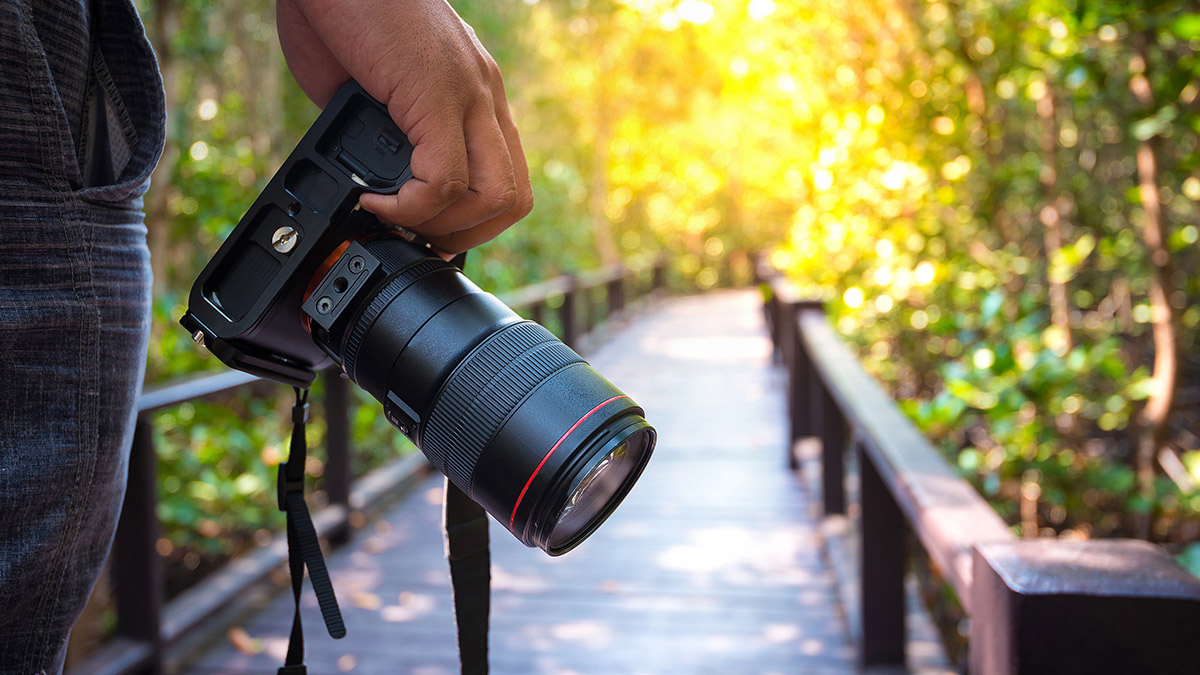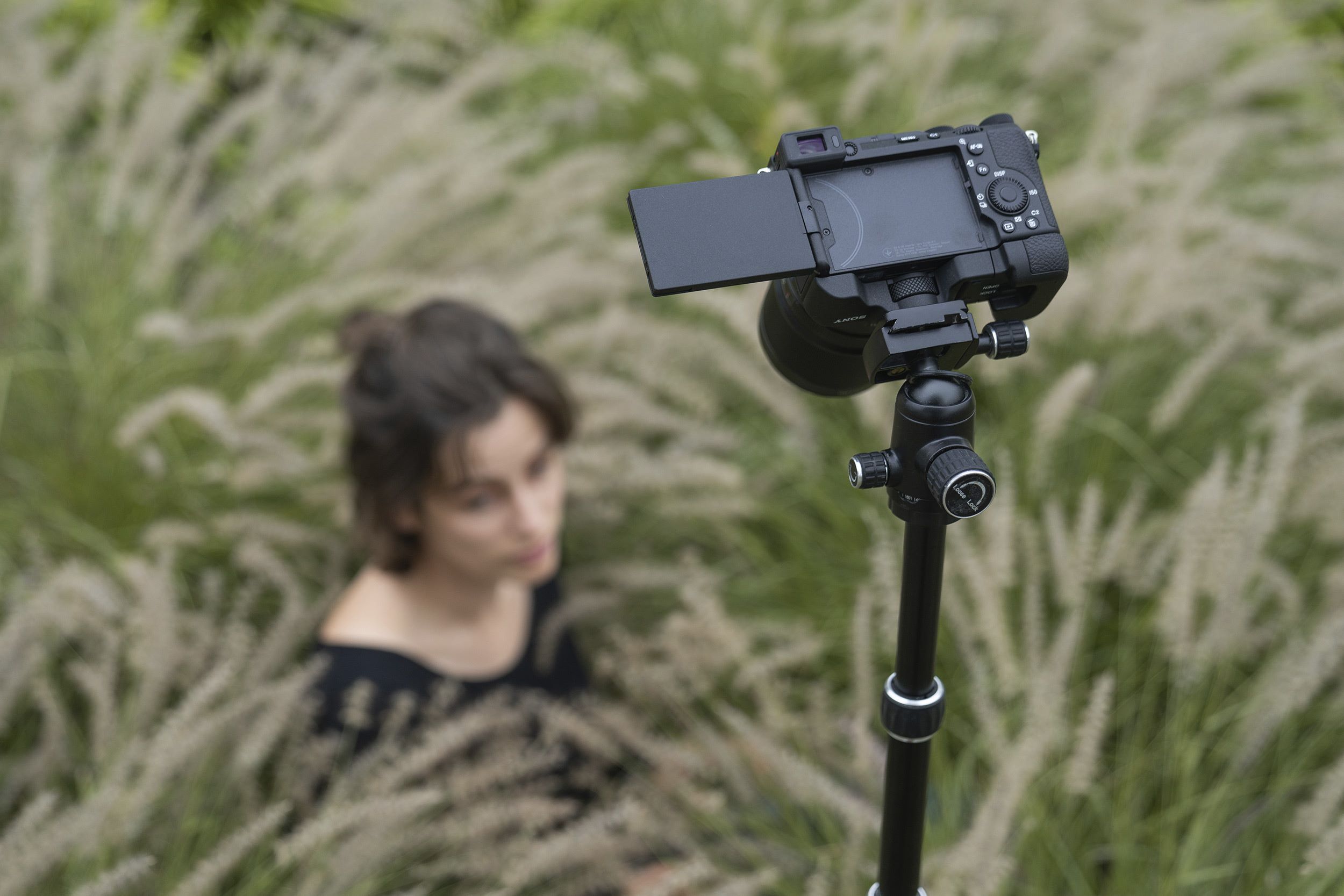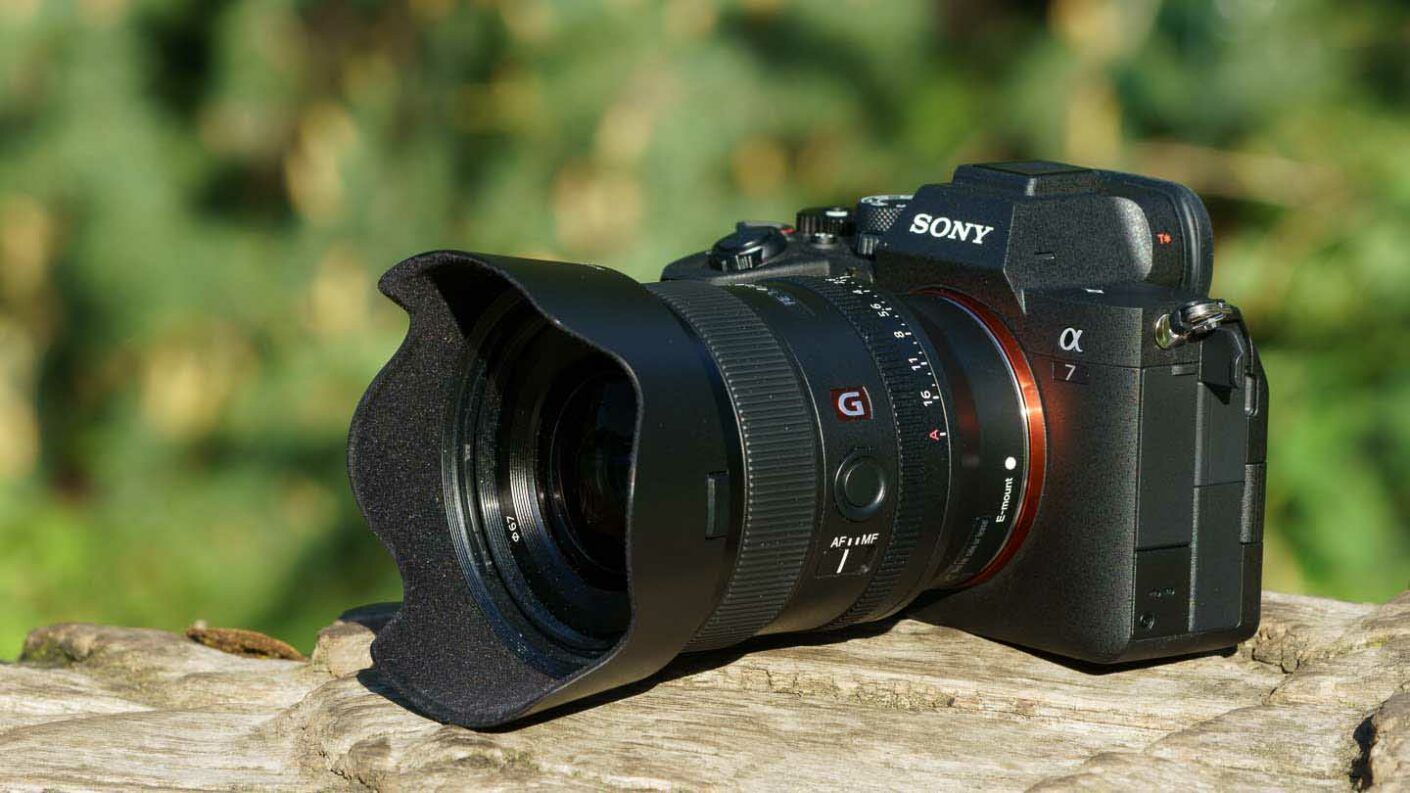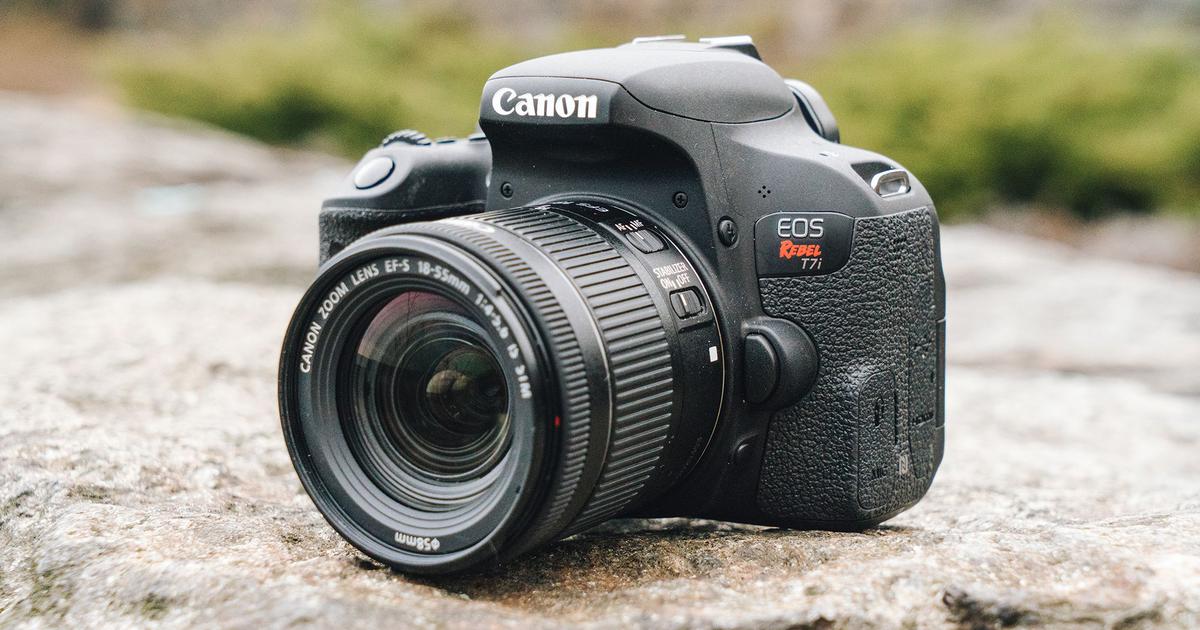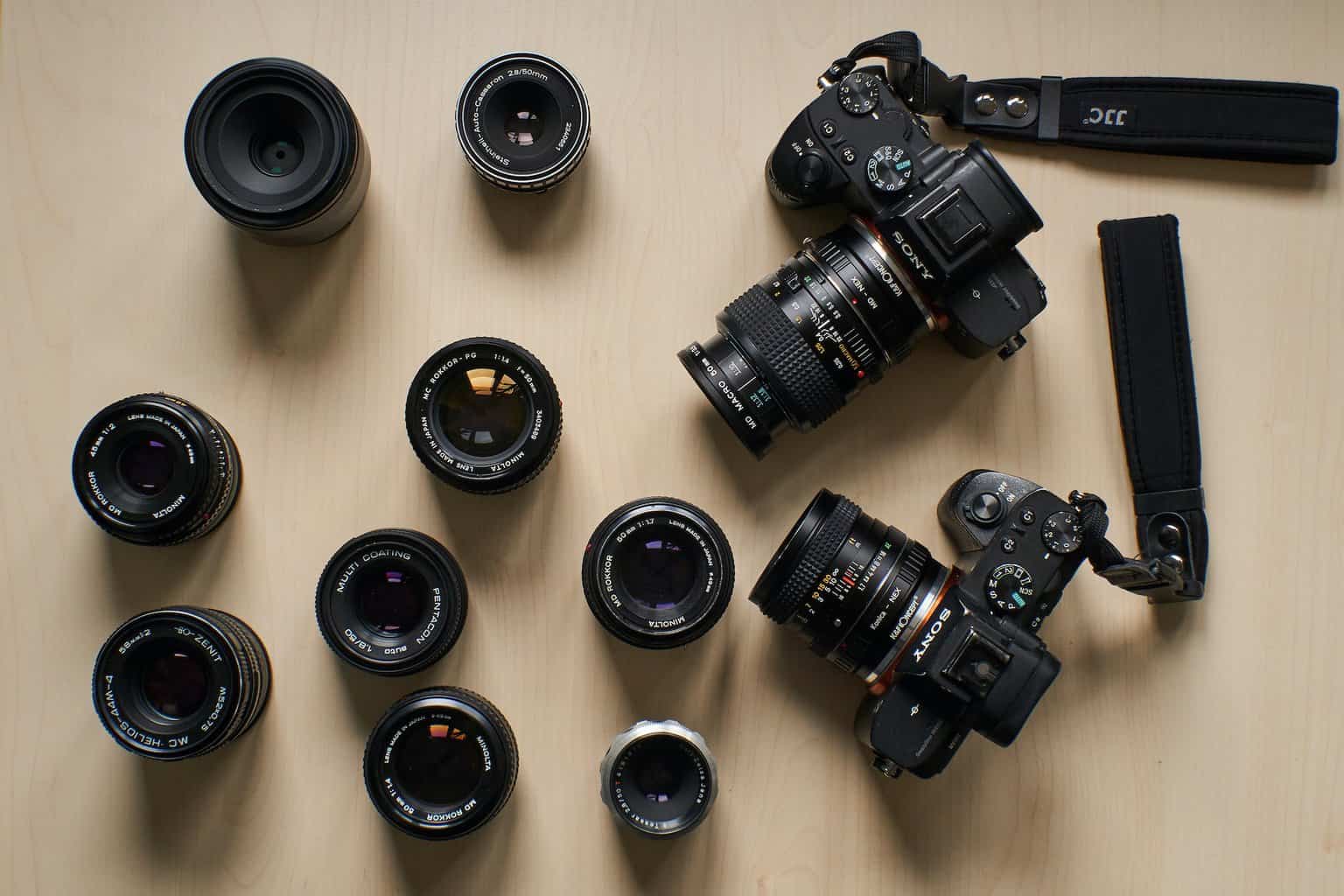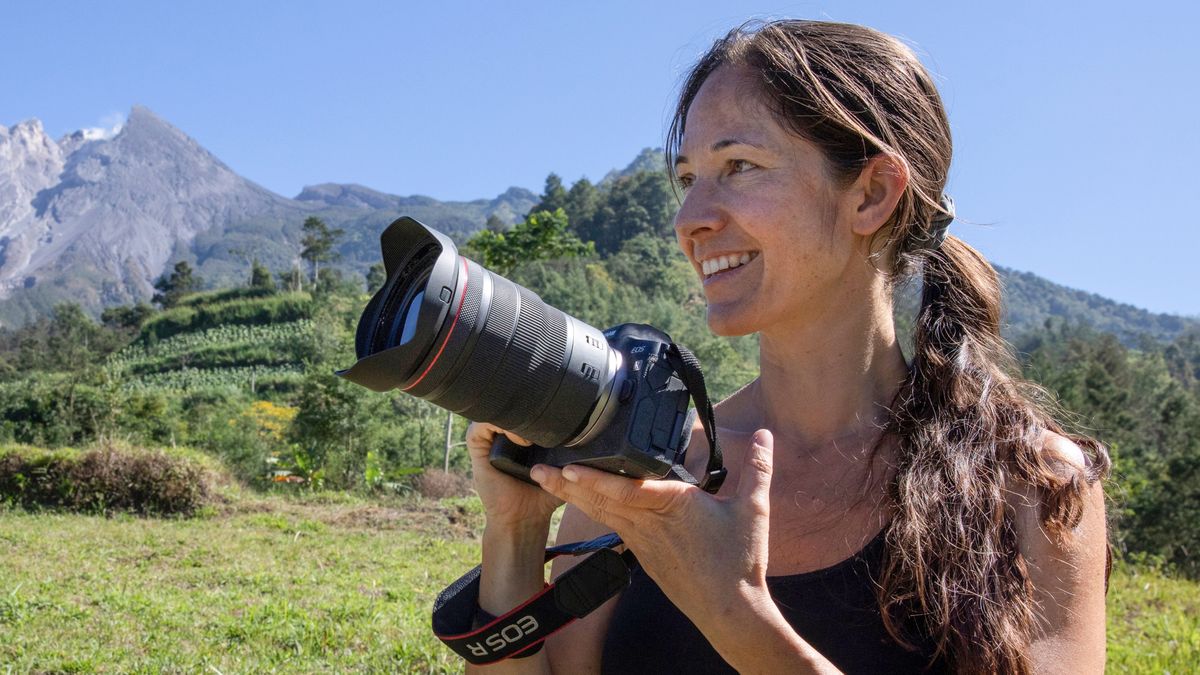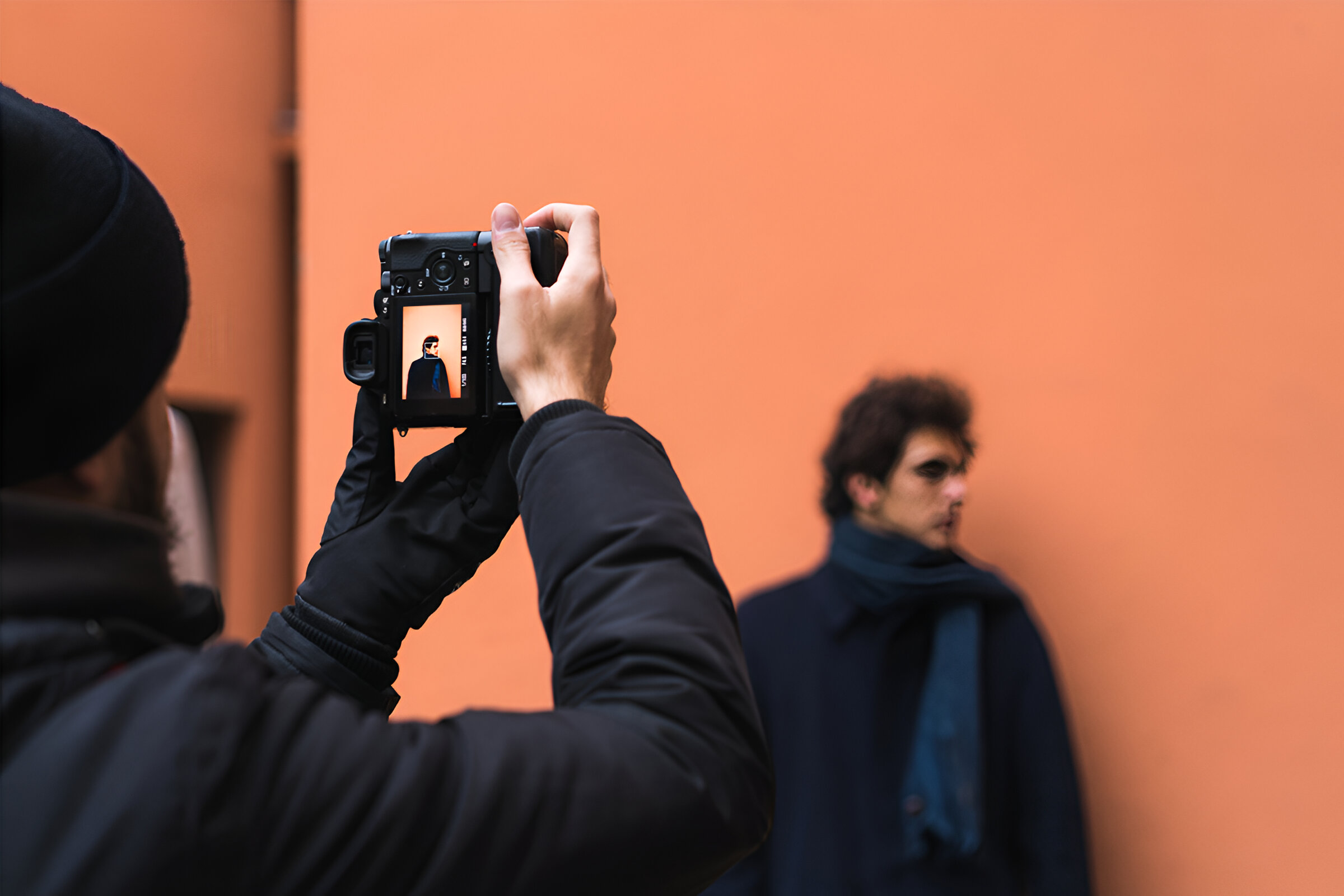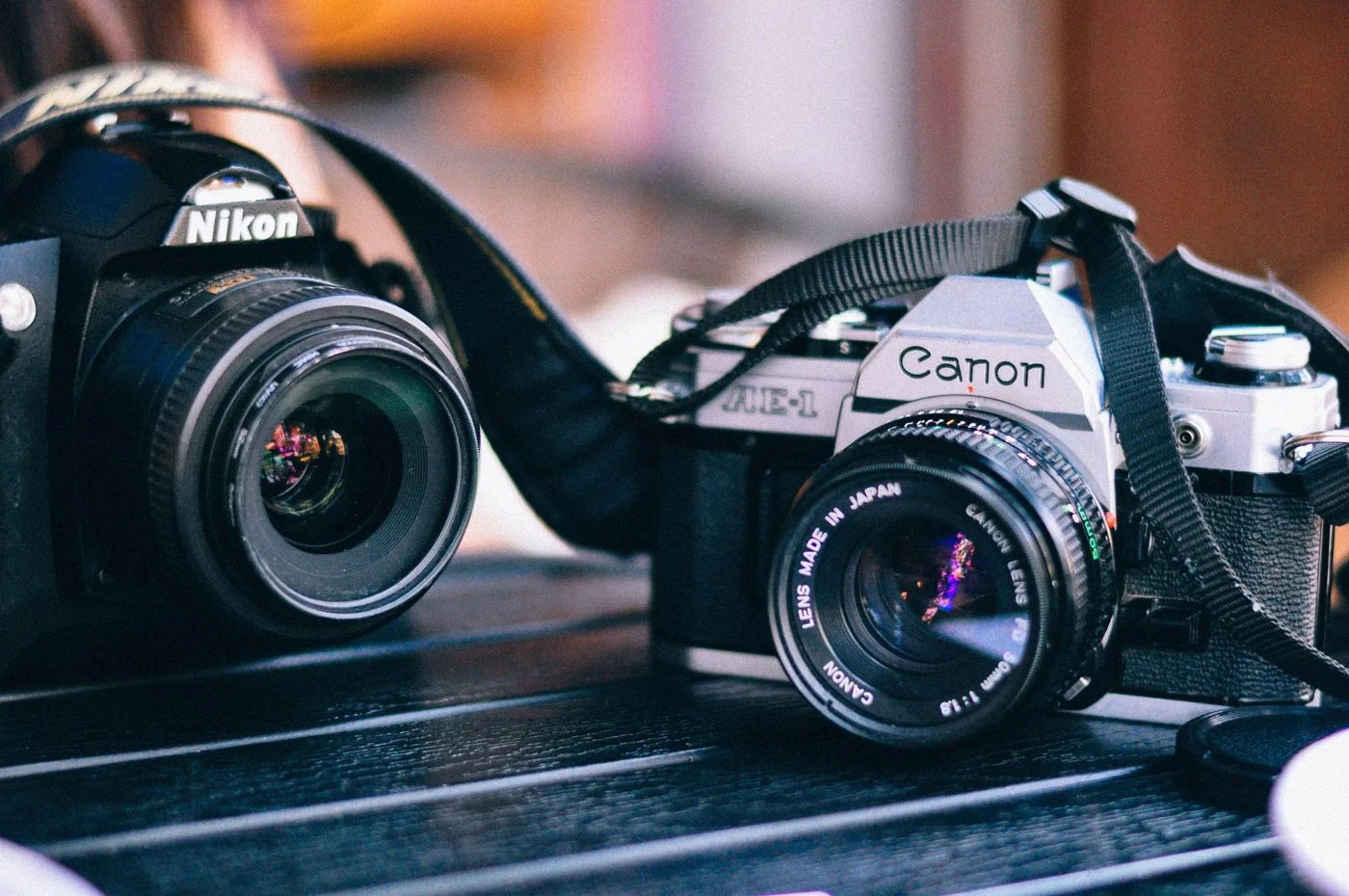Introduction
Understanding the Basics of DSLR Portrait Photography
Welcome to the fascinating world of DSLR portrait photography! Capturing stunning portraits with a digital single-lens reflex (DSLR) camera involves a blend of technical proficiency and artistic flair. Whether you’re an aspiring photographer or a hobbyist looking to elevate your portrait-taking skills, this guide will equip you with essential knowledge to create captivating and visually striking portraits.
Mastering the art of portrait photography requires a deep understanding of your DSLR camera’s capabilities, lens selection, and various technical aspects such as aperture, shutter speed, ISO, and white balance. Moreover, effective composition, lighting techniques, and adept direction of your subject are pivotal in achieving remarkable portrait shots.
Throughout this comprehensive guide, we will delve into the intricacies of DSLR portrait photography, providing valuable insights and practical tips to help you unleash your creativity and capture compelling portraits. From comprehending the fundamentals of your DSLR camera to harnessing natural and artificial lighting, as well as post-processing techniques, this guide will empower you to elevate your portrait photography to new heights.
So, grab your DSLR camera, unleash your creativity, and let’s embark on an enriching journey to master the art of capturing breathtaking portraits!
Understanding Your DSLR Camera
Before delving into the intricacies of portrait photography, it’s essential to familiarize yourself with the fundamental features and functions of your DSLR camera. Understanding the capabilities of your camera empowers you to harness its full potential and capture stunning portraits with precision and creativity.
First and foremost, acquaint yourself with the various physical components of your DSLR camera, including the lens, viewfinder, mode dial, and control buttons. Familiarize yourself with the camera’s menu system, enabling you to navigate through settings and customize options according to your photographic preferences.
Understanding the exposure triangle – comprising aperture, shutter speed, and ISO – is crucial for achieving optimal exposure in portrait photography. Aperture dictates the depth of field, influencing the background blur and sharpness of the subject. Shutter speed controls the duration of light exposure, crucial for capturing moving subjects or maintaining stability in low-light conditions. Additionally, mastering ISO sensitivity allows you to adapt to varying lighting conditions without compromising image quality.
Furthermore, exploring the autofocus modes and metering options of your DSLR camera enhances your ability to focus accurately on your subject and achieve well-balanced exposures. Familiarize yourself with different shooting modes, such as manual, aperture priority, and shutter priority, to exercise creative control over your portraits.
As you embark on your portrait photography journey, delve into the intricacies of white balance settings to ensure accurate color reproduction in diverse lighting environments. Familiarize yourself with the histogram display, which provides a visual representation of exposure levels, aiding in precise exposure adjustments.
By comprehensively understanding your DSLR camera’s functionalities and settings, you lay a solid foundation for capturing stunning portraits with technical proficiency and creative finesse. Embrace your camera as a powerful tool for visual storytelling and artistic expression, and let its capabilities amplify your passion for portrait photography.
Choosing the Right Lens
When it comes to portrait photography, selecting the right lens is a pivotal decision that significantly influences the visual impact and aesthetic quality of your portraits. The choice of lens not only determines the framing and composition of your shots but also plays a crucial role in capturing the nuances of expression and personality in your subjects.
Prime lenses, characterized by a fixed focal length, are revered for their exceptional sharpness, wide apertures, and ability to produce stunning bokeh, making them ideal for portrait photography. The 50mm and 85mm prime lenses are popular choices among portrait photographers, offering a flattering perspective and beautiful background blur that accentuates the subject.
For environmental portraits or group shots, a versatile zoom lens such as a 24-70mm or 24-105mm provides flexibility in framing, allowing you to capture a range of compositions without changing lenses. These zoom lenses are well-suited for capturing candid moments and diverse perspectives in portrait sessions.
Furthermore, the choice between a wide-angle and telephoto lens depends on the desired visual impact and storytelling approach. Telephoto lenses, such as the 70-200mm, excel in isolating the subject from the background, compressing perspective, and capturing intimate details with a flattering compression effect. On the other hand, wide-angle lenses, like the 35mm or 24mm, are favored for environmental portraits, incorporating the surroundings to contextualize the subject within their environment.
Consider the aperture capabilities of the lens, as wider apertures (e.g., f/1.8 or f/1.4) offer exquisite background separation and low-light performance, enabling you to create captivating portraits with creamy bokeh and enhanced subject isolation. Additionally, a lens with optical image stabilization can be advantageous in maintaining sharpness and stability, especially in handheld shooting scenarios.
Ultimately, the choice of lens should align with your creative vision and the specific requirements of the portrait session. Whether you prioritize the intimate details of individual expressions, the context of the surroundings, or the versatility of zoom capabilities, selecting the right lens is a pivotal step in crafting visually compelling and evocative portraits.
Mastering Aperture and Depth of Field
Understanding and mastering aperture is fundamental to creating captivating portraits with a DSLR camera. Aperture, represented by the f-stop value, not only regulates the amount of light entering the lens but also governs the depth of field, influencing the background blur and sharpness in your portraits.
When shooting portraits, utilizing a wide aperture (e.g., f/1.8 or f/2.8) produces a shallow depth of field, resulting in a beautifully blurred background that accentuates the subject and draws attention to their features. This technique is particularly effective for isolating the subject from distracting backgrounds and creating a compelling visual impact.
Conversely, employing a narrower aperture (e.g., f/8 or higher) expands the depth of field, ensuring that both the subject and the background are in sharp focus. This approach is beneficial for environmental portraits or group shots where maintaining clarity and detail in the surroundings enhances the storytelling aspect of the portrait.
Understanding the interplay between aperture, focal length, and subject distance is crucial in achieving the desired depth of field. As focal length increases, the depth of field narrows, intensifying background blur and isolating the subject. Additionally, adjusting the distance between the subject and the background influences the perceived depth in the image, allowing for creative control over the background’s visual impact.
Furthermore, recognizing the impact of lens choice on depth of field empowers you to select the most suitable lens for your desired aesthetic. Prime lenses with wide apertures are renowned for their ability to create striking bokeh and shallow depth of field, whereas zoom lenses offer flexibility in framing and depth of field control across varying focal lengths.
Mastering aperture and depth of field not only enhances the visual allure of your portraits but also enables you to craft images that evoke emotion and narrative. By skillfully manipulating aperture to control depth of field, you can imbue your portraits with a sense of intimacy, drama, and visual poetry, elevating them from mere photographs to compelling works of art.
Utilizing Shutter Speed for Portraits
Shutter speed plays a pivotal role in portrait photography, influencing the visual dynamics and expressive quality of your portraits. Understanding the relationship between shutter speed and motion is essential for capturing subjects with clarity, precision, and emotive impact.
When photographing portraits, the choice of shutter speed determines the rendering of motion, whether it involves freezing the subject’s movement or conveying a sense of fluidity and dynamism. A faster shutter speed, such as 1/250 or higher, is ideal for capturing static portraits, ensuring sharpness and detail without motion blur. This is particularly advantageous when photographing subjects in controlled environments or when seeking to emphasize stillness and composure.
Conversely, employing a slower shutter speed introduces the potential for intentional motion blur, adding a sense of movement and energy to the portrait. This technique can be creatively employed to convey a dynamic and candid feel, especially when photographing subjects engaged in activities or showcasing expressive gestures.
Additionally, the choice of shutter speed is intertwined with considerations of available light and handheld shooting stability. In low-light conditions, a slower shutter speed may be necessary to achieve proper exposure, but it requires a steady hand or the use of image stabilization to prevent unintended blur from camera shake. Alternatively, in well-lit environments, a faster shutter speed ensures precise capture of fleeting expressions and subtle nuances in the subject’s demeanor.
Furthermore, understanding the concept of focal length and its impact on handheld stability is crucial when selecting an appropriate shutter speed. As a general rule, the minimum handheld shutter speed should correspond to the reciprocal of the focal length to mitigate the risk of camera shake. For instance, when using a 50mm lens, aim for a shutter speed of at least 1/50 to maintain sharpness in handheld shooting.
By skillfully utilizing shutter speed in portrait photography, you can convey a sense of stillness, motion, or spontaneity, enriching your portraits with narrative depth and emotional resonance. Whether freezing fleeting expressions or infusing portraits with a sense of vitality, the strategic application of shutter speed elevates your ability to capture the essence and personality of your subjects.
Using ISO to Control Light
ISO, a critical component of the exposure triangle, plays a pivotal role in controlling light sensitivity and exposure in portrait photography. Understanding how to effectively utilize ISO empowers you to adapt to varying lighting conditions while maintaining image quality and achieving optimal exposure for your portraits.
When shooting portraits in low-light environments or dimly lit settings, increasing the ISO sensitivity allows your camera to capture adequate light, resulting in well-exposed images without the need for prolonged exposure times. This is particularly advantageous when photographing indoor portraits, evening events, or artistic low-light compositions, enabling you to preserve ambient light and capture compelling portraits without excessive noise or blurriness.
Conversely, in well-lit environments or situations with ample natural or artificial light, utilizing a lower ISO setting minimizes the camera’s light sensitivity, contributing to cleaner images with reduced digital noise. By opting for a lower ISO, you can maintain optimal image quality and sharpness, especially when striving for precision and clarity in portrait details and textures.
It’s essential to strike a balance between ISO sensitivity, aperture, and shutter speed to achieve the desired exposure while mitigating the potential drawbacks of high ISO settings, such as increased noise and reduced dynamic range. By understanding the trade-offs associated with ISO adjustments, you can make informed decisions that align with your creative vision and the specific lighting conditions of your portrait session.
Additionally, modern DSLR cameras and mirrorless systems often offer impressive ISO performance, allowing for higher sensitivity settings with minimal noise, thereby expanding the creative possibilities in challenging lighting scenarios. Familiarize yourself with your camera’s ISO capabilities and conduct tests to ascertain the optimal ISO range for achieving well-exposed portraits with minimal compromise on image quality.
Ultimately, mastering the strategic use of ISO in portrait photography empowers you to adapt to diverse lighting conditions, exercise creative control over exposure, and elevate the visual impact of your portraits. By skillfully manipulating ISO sensitivity to harness light and shadow, you can craft evocative and visually compelling portraits that resonate with depth and emotive resonance.
Understanding White Balance
White balance is a crucial aspect of portrait photography that directly influences the accurate reproduction of colors in varying lighting conditions. A thorough comprehension of white balance empowers you to capture portraits with natural and lifelike color tones, ensuring that skin tones, clothing, and environmental elements are rendered authentically and harmoniously.
When photographing portraits, different light sources, such as natural daylight, incandescent bulbs, fluorescent lighting, and flash, emit varying color temperatures, which can impact the overall color cast of your images. White balance serves as a mechanism to neutralize these color shifts, allowing your camera to interpret and depict colors accurately, thereby preserving the visual authenticity of your portraits.
Understanding the presets and custom white balance settings on your camera enables you to adapt to different lighting scenarios with precision and finesse. Preset white balance modes, including daylight, shade, cloudy, tungsten, fluorescent, and flash, offer convenient options tailored to specific lighting conditions, ensuring consistent and accurate color rendition in your portraits.
Moreover, custom white balance empowers you to calibrate the color temperature according to the ambient lighting of the scene, thereby fine-tuning the white balance for unparalleled color accuracy. This approach is particularly beneficial in mixed lighting environments or situations where precise color reproduction is paramount, such as professional studio portraits or indoor events with diverse light sources.
Furthermore, the creative application of white balance extends beyond technical accuracy, offering the opportunity to imbue your portraits with mood, ambiance, and visual storytelling. Deliberate shifts in white balance, such as warming tones for a nostalgic, golden-hour aesthetic or cooling tones for a serene, ethereal ambiance, can evoke emotive responses and enhance the narrative impact of your portraits.
By mastering white balance in portrait photography, you can ensure that the colors in your portraits are faithful to the scene and the subject’s appearance, preserving the integrity of their skin tones and the environmental hues. Whether striving for naturalistic fidelity or artistic reinterpretation of colors, a nuanced understanding of white balance empowers you to create portraits that resonate with authenticity, emotion, and visual allure.
Composition and Framing Techniques
Mastering composition and framing is essential for creating visually compelling and impactful portraits that resonate with the viewer. Considerations such as framing, perspective, balance, and visual flow play a pivotal role in capturing the essence and personality of your subjects while conveying a narrative and evoking emotional responses.
When framing portraits, consider the rule of thirds as a guiding principle, positioning the subject off-center to create a balanced and visually engaging composition. Placing the subject at the intersecting points of the grid draws attention and adds dynamism to the portrait, enhancing its visual appeal and creating a sense of movement within the frame.
Furthermore, exploring various perspectives and angles enriches the visual storytelling of your portraits. Experiment with low-angle shots for a sense of empowerment and grandeur, or opt for high-angle perspectives to convey vulnerability or innocence. Each perspective imbues the portrait with a distinct emotional resonance and narrative context, offering a deeper connection between the viewer and the subject.
Consider incorporating negative space to emphasize the subject and evoke a sense of intimacy and contemplation. Thoughtfully utilizing negative space around the subject directs the viewer’s focus, allowing for a profound and evocative portrayal of the subject’s emotions and presence within the frame.
Additionally, harness leading lines and visual pathways to guide the viewer’s gaze and create a sense of depth and movement within the composition. Whether utilizing natural elements, architectural features, or environmental textures, leading lines direct attention towards the subject, fostering a sense of connection and visual engagement.
Moreover, the strategic use of framing elements, such as doorways, windows, or foliage, adds depth and context to the portrait, framing the subject within their environment and infusing the composition with narrative significance. Intentional framing elements contribute to the visual storytelling, offering insights into the subject’s personality and the broader context of the portrait.
By mastering composition and framing techniques in portrait photography, you elevate your ability to create visually arresting and emotionally resonant portraits. Thoughtful consideration of framing, perspective, balance, and visual dynamics empowers you to craft portraits that transcend mere imagery, becoming evocative and immersive visual narratives that captivate and inspire the viewer.
Using Natural Light for Portraits
Natural light serves as a versatile and evocative source for capturing stunning portraits, offering a myriad of possibilities for creating compelling and visually striking imagery. Understanding how to harness natural light effectively empowers you to infuse your portraits with a sense of warmth, depth, and natural beauty, while capturing the authentic essence of your subjects.
When utilizing natural light for portraits, consider the quality and direction of light to sculpt and define the subject. The soft, diffused light of early morning or late afternoon, often referred to as the “golden hour,” bathes the scene in a warm, flattering glow, creating a serene and ethereal ambiance that enhances the mood and visual allure of the portraits.
Furthermore, positioning the subject in open shade or utilizing the gentle, indirect light filtering through foliage can yield soft, even illumination that minimizes harsh shadows and highlights, resulting in a natural and flattering portrayal of the subject’s features and expressions.
Embrace the interplay of light and shadow to add depth and dimension to your portraits. By strategically positioning the subject in relation to the light source, you can create captivating interplays of highlights and shadows that accentuate the contours and textures of the subject, infusing the portraits with a sense of drama and visual interest.
Consider the use of natural reflectors, such as walls, surfaces, or reflective materials, to bounce and redirect natural light onto the subject, effectively filling in shadows and enhancing the overall illumination. This technique contributes to a balanced and harmonious portrayal, ensuring that the subject is bathed in a flattering and naturalistic light that accentuates their features.
Moreover, embracing the dynamic qualities of natural light allows for spontaneous and candid moments, capturing genuine emotions and interactions in an authentic and unobtrusive manner. The ever-changing nuances of natural light offer a rich tapestry of visual possibilities, enabling you to create portraits that resonate with sincerity and emotional depth.
By skillfully utilizing natural light in portrait photography, you can capture evocative and timeless portraits that celebrate the inherent beauty and character of your subjects. Embracing the nuances of natural light not only enhances the visual allure of your portraits but also imbues them with a sense of authenticity and emotional resonance, elevating them to captivating visual narratives that endure beyond the confines of the frame.
Using Artificial Light for Portraits
Artificial light sources offer unparalleled control and versatility in portrait photography, empowering photographers to shape and sculpt light to achieve their desired aesthetic and visual impact. Whether utilizing studio strobes, continuous lighting, or portable speedlights, understanding how to harness artificial light effectively expands the creative possibilities and technical precision in capturing captivating portraits.
Studio strobes, characterized by powerful bursts of light, provide consistent and controllable illumination, making them ideal for studio portraits and controlled indoor environments. By modifying the intensity, direction, and quality of the light, photographers can sculpt and define the subject with precision, creating dramatic and visually striking portraits with meticulous attention to detail.
Continuous lighting sources, such as LED panels or tungsten lights, offer a constant and steady illumination that allows for real-time assessment of light and shadow, making them advantageous for portrait sessions that necessitate a dynamic and interactive approach. The ability to visualize the lighting effects in real time enables photographers to adapt and fine-tune the illumination to achieve their desired mood and visual narrative.
Portable speedlights, or external flash units, provide a versatile and portable lighting solution for on-location portraits, offering the flexibility to manipulate and augment natural light or to create dramatic lighting effects in diverse environments. By employing light modifiers, such as softboxes, umbrellas, or reflectors, photographers can diffuse, shape, or redirect the artificial light to achieve a flattering and nuanced portrayal of the subject.
Understanding the principles of artificial light, including light temperature, color rendering, and light modifiers, empowers photographers to craft portraits with precise control over the illumination and visual ambiance. By mastering the interplay of light and shadow, photographers can evoke mood, depth, and dimension, infusing their portraits with a captivating and evocative visual allure.
Furthermore, the strategic use of artificial light allows for the creation of dynamic and expressive portraits that transcend the constraints of natural light, offering endless possibilities for artistic interpretation and visual storytelling. Whether seeking to convey drama, elegance, or intimacy, artificial light serves as a powerful tool for shaping and enhancing the visual impact of portraits, elevating them to compelling and visually arresting compositions.
Posing and Directing Your Subject
The art of posing and directing your subject is instrumental in capturing captivating and expressive portraits that convey the desired mood, personality, and narrative. Effective communication, empathy, and a keen eye for composition are essential in guiding your subject to evoke genuine emotions and authentic interactions, resulting in portraits that resonate with depth and visual allure.
Establishing a rapport with your subject is paramount to creating a comfortable and collaborative environment. Engage in open dialogue, offer encouragement, and convey clear directions to ensure that your subject feels at ease and confident during the portrait session. Building a sense of trust and rapport fosters a conducive atmosphere for genuine and emotive expressions, resulting in portraits that authentically capture the subject’s personality and essence.
Consider the body language, facial expressions, and gestures of your subject, and provide gentle guidance to evoke natural and relaxed poses that reflect their individuality and character. Encourage subtle movements, shifts in posture, and organic interactions to capture candid and spontaneous moments that convey genuine emotions and connections.
When directing your subject, consider the interplay of light and shadow, the framing of the composition, and the visual dynamics within the scene. Provide clear and concise instructions for positioning, posture, and facial expressions, ensuring that the subject’s portrayal aligns with the intended mood and narrative of the portrait.
Encourage your subject to convey authentic emotions and expressions by evoking memories, eliciting laughter, or engaging in meaningful conversations. By fostering a relaxed and natural atmosphere, you can capture genuine moments of joy, contemplation, or introspection, resulting in portraits that resonate with sincerity and emotional depth.
Moreover, consider the environment and surroundings as integral elements of the portrait composition. Guide your subject to interact with the surroundings, utilize props, or engage in organic movements that contextualize the portrait and add depth to the visual narrative. By integrating the environment into the portrayal, you can create immersive and evocative portraits that transcend mere imagery, becoming compelling visual stories that resonate with the viewer.
By skillfully posing and directing your subject, you can capture portraits that transcend mere representation, becoming evocative and immersive visual narratives that captivate and inspire the viewer. Through empathetic communication, thoughtful guidance, and a keen understanding of composition, you can craft portraits that authentically reflect the subject’s essence, emotions, and individuality, resulting in timeless and compelling visual portrayals.
Post-Processing Tips for Portrait Photography
Post-processing serves as a transformative phase in portrait photography, offering the opportunity to refine, enhance, and imbue your portraits with a distinct visual style while preserving the authenticity and essence of your subjects. By skillfully employing post-processing techniques, you can elevate your portraits to new heights, infusing them with emotive depth, visual allure, and a timeless aesthetic.
Begin by selecting a professional-grade photo editing software that provides a comprehensive suite of tools for precise adjustments and creative enhancements. Familiarize yourself with the software’s capabilities, including exposure adjustments, color correction, skin retouching, and selective editing, enabling you to refine and finesse the visual elements of your portraits with precision and artistry.
When editing portraits, prioritize non-destructive editing techniques, such as adjustment layers and smart filters, to maintain the flexibility and integrity of the original image. This approach allows for iterative refinements and targeted adjustments without compromising the quality and fidelity of the portrait, ensuring that the final output reflects your artistic vision and the subject’s authentic portrayal.
Focus on enhancing the natural beauty and character of your subjects while maintaining a nuanced and authentic representation. Refine skin tones, minimize blemishes, and soften imperfections with subtlety and restraint, preserving the subject’s individuality and personality while achieving a polished and flattering portrayal.
Pay meticulous attention to color grading and tonal adjustments to evoke mood, ambiance, and visual coherence in your portraits. Experiment with color palettes, contrast levels, and tonal balance to convey the desired emotional resonance and narrative depth, infusing your portraits with a distinct and evocative visual style.
Furthermore, consider the strategic application of vignettes, selective sharpening, and subtle texture enhancements to draw attention to the subject and add depth and dimension to the composition. By delicately refining the visual elements of your portraits, you can create images that resonate with sophistication, visual impact, and timeless elegance.
Embrace the creative potential of post-processing to experiment with artistic interpretations, such as monochrome conversions, vintage effects, or creative overlays, to imbue your portraits with a unique and compelling visual identity. By exploring diverse post-processing styles, you can craft portraits that transcend conventional representation, becoming immersive and evocative visual narratives that captivate and inspire the viewer.
By skillfully navigating the post-processing phase in portrait photography, you can refine and elevate your portraits to become compelling visual stories that resonate with depth, emotion, and timeless allure. Embrace the creative possibilities of post-processing to infuse your portraits with a distinct visual style, preserving the authenticity and individuality of your subjects while evoking emotive responses and enduring visual impact.







